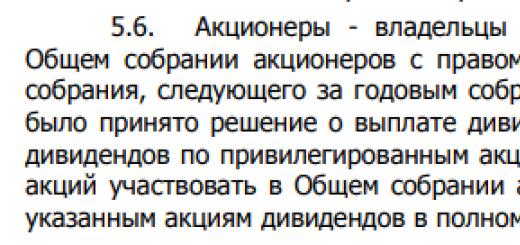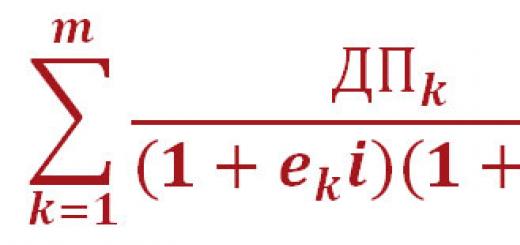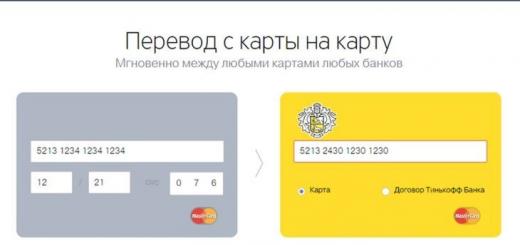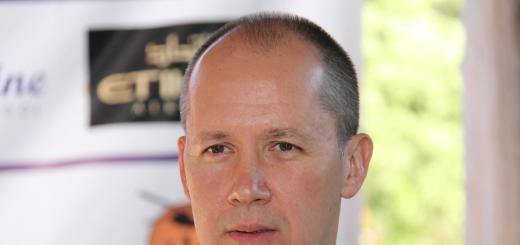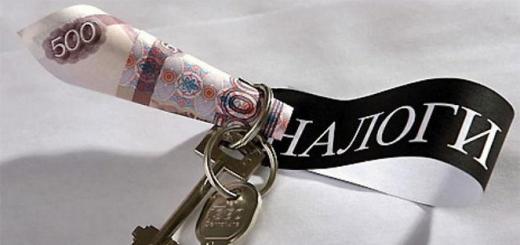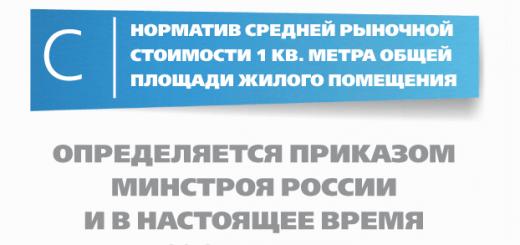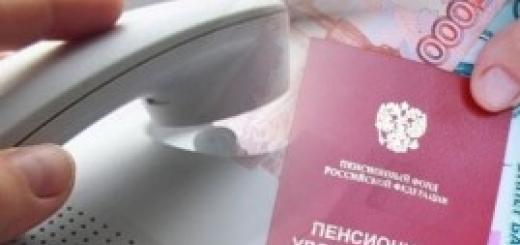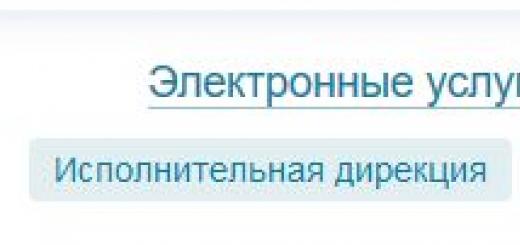The design repeats the banknote of the 1995 sample, but with a denomination reduced by 1000 times. Put into circulation on January 1, 1998. In 2001 and 2004, modifications were carried out with the addition of new security features and a partial change in design (2004), the modified banknotes have a vertical mark on the white field of the obverse.
On the front side in the foreground is a monument to Peter I in Arkhangelsk, at the top left is the number "500". Behind the monument is a stylized ribbon with the inscription "Arkhangelsk" (on the ribbon, when viewing the bill at an angle, the letters "PP" are visible), in the background there is an engraving depicting the Arkhangelsk port and a sailboat, made in blue. In the left part of the central field of the banknote there is a vertical color ornament. At the bottom right there is an inscription - "FIVE HUNDRED RUBLES". At the top left, over a circle of optically variable color, is the emblem of the Bank of Russia in white (a two-headed eagle with lowered wings, under it is a semicircular inscription "BANK OF RUSSIA"). At the top of the banknote on the right is the inscription - "TICKET OF THE BANK OF RUSSIA". On the sides of the central rectangle there are two coupon fields with watermarks. On the left field (smaller) in the middle, the series and number of the banknote are indicated in red paint, below - in silver paint the number "500", on top of which there is a five-line inscription - "FAKE TICKETS OF THE BANK OF RUSSIA IS PROSECUTED BY LAW", next to the inscription the denomination is indicated with signs for the visually impaired. On the right field (larger) at the top under the inscription in green paint, the series and number of the banknote are repeated, at the bottom there is a silver rosette with three numbers "500" (the middle one is larger). All images and inscriptions of the foreground are made in purple.
On the reverse side in the center there is a blue-violet engraving depicting the Solovetsky Monastery (view of the 90s), above it there are 17 horizontal stripes with microtext across the entire width of the bill. On the right, over a vertical multi-colored ornament - the number "500", below it are 4 double horizontal stripes with repeatedly repeated microtext - "TsBR 500". On the sides of the bill are two coupon fields painted in the middle with a colored geometric pattern. In the upper parts of the side fields there are patterned frames with the numbers "500", at the bottom of the left field the denomination is indicated in words - "FIVE HUNDRED RUBLES" (the second word goes to the middle colored part of the bill). At the bottom of the right margin, the year of the sample is "1997". All foreground inscriptions are in purple.
The paper has a black vertical security thread with the repeated text "CBR 500" alternating with the same but inverted display. When viewing a banknote in the light, the pattern of the front side is complemented by the pattern of the back. In the infrared range, on the front side, the emblem of the Bank of Russia is visible on the left, the number "500" at the bottom, signs for the visually impaired, part of the ribbon, a circle of vertical ornament, a rosette with the number "500" and the inscription "TICKET OF THE BANK OF RUSSIA" are visible on the right. The UV light brightly illuminates the security colored fibers of the paper, the reverse side ornament and the security thread.
Demonstration copies, which were not released into circulation, contain a "SAMPLE" perforation, made horizontally, and two overprints on the back (made in red diagonally). Number 0000000 or any other, PP series or other. They were printed like ordinary banknotes (on paper with watermarks, on both sides).
To close - double click - to scale
Delivery
We ship all orders within 24 hours of placing an order. When picking up from our office, the order will also be ready within 24 hours from the moment the order is created.
After receiving the order, you can return it in whole or in part within 30 days from the date of receipt if you do not like something (for any reason).
We can deliver this product to any country in the world.
Choose how to receive:
Delivery by Russian Post Pick up an order from a parcel terminal or an order pickup point (PVZ) PickPoint Pickup from our office in Moscow Delivery by our courier to your door inside the Moscow Ring Road (Moscow) Delivery outside of Russia Delivery to your door (SDEK) Pick up an order from a CDEK pickup point Payment upon receipt Online prepayment Payment with RRcoin bonusesDelivery by this method is carried out to all cities of the Russian Federation, including the most remote cities and villages.
You can place an order and come to pick it up at the nearest branch of the Russian Post, indicating the index of this branch when placing an order.
The order will be transferred to the Russian Post within 24 hours after placing the order. Immediately after that, you will receive an SMS and an email with a track number by which you can track the location of the parcel on the website http://pochta.ru. As soon as the parcel is in the Post office, you will receive another SMS and email stating that the parcel can be picked up. You will see the approximate delivery time at checkout.
The Russian Post stores parcels for 14 days, so we recommend picking up your order no later than 14 days from the date of receipt of the SMS/email. You will need your passport to receive the parcel.
The shipping cost is calculated automatically on the checkout screen as soon as you enter the zip code of the branch where you want to pick up the order. The delivery price depends on the location of the Post Office, the weight of the order and the method of payment.
If you collect a basket of 5000r, then the delivery will be free. The maximum basket for this method of receipt is 50000 rubles (if the amount is higher, other methods are available: PickPoint, SDEK, EMS).
Pros: delivery even to the most remote regions where other transport companies do not deliver. Cons: long (compared to delivery by courier or PickPoint) and often a little more expensive than PickPoint.
In addition to the Russian Post network, a similar transport company operates on the territory of the Russian Federation, represented in all major cities: PickPoint. The company has 3,416 pick-up points and parcel lockers in 540 Russian cities. The network works on the same principle as the Russian Post: you need to come to the pickup point or to the post office and pick up the order. The difference with the Russian Post is that orders are delivered faster through PickPoint than through the Post, and the price is often cheaper than through the Post. Therefore, if you live in a large city and see this method of receiving an order during checkout, we recommend choosing it. This is the optimal combination of ease of receipt, shipping cost and delivery speed.
After placing the order, it will be transferred to PickPoint within 24 hours, about which you will receive an SMS and an email message with a track number by which you can track the location of the parcel. As soon as the parcel is in the PVZ/postamat, you will receive an SMS stating that the order can be picked up. The shelf life of the order in the parcel terminal is 3 days, but it can be extended after mobile app pickpoint.
Pros: fast delivery, delivery price is comparable to the Russian Post, no need to wait for the courier to arrive, you can come to the nearest post office / pickup point and pick it up at a convenient time. Cons: there are far from all small towns / villages / villages in Russia.
Delivery mode: daily from 09:00 to 20:00 Moscow time.
Office address: 127055, Moscow, m. Mendeleevskaya, st. Novoslobodskaya, 20, floor 4, office 410.
The order will be ready within 24 hours after registration, you will receive an SMS and email message as soon as you can come for the order.
The shelf life of the order without prepayment: 7 days, after which the order will be canceled and you will receive an SMS and email that the order has been cancelled. The prepaid order will be stored for at least 1 month.
You can pay for the order bank card or cash on the spot.
Pros: You don't have to pay for shipping. Cons: you need to go on your own to order.
If you live in Moscow and can accept an order within the Moscow Ring Road, we will deliver it by our own courier service. Within 24 hours after placing the order, the courier will contact you to clarify the details of the order. Delivery will be made within 3 days after ordering.
If you collect a basket of 5000r, delivery will be free.
Pros: the fastest way to deliver to your door, no need to go somewhere to order. Cons: there is only in Moscow inside the Moscow Ring Road, you need to be at the agreed place when the courier arrives (at the agreed time) in order to receive an order from him.
We deliver orders to all countries using the EMS transport company. We ship orders only after payment has been made.
We do not ship items over 100 years old overseas, unfortunately this is illegal.
The order will be sent within 24 hours after payment.
If you want to receive an order faster and live in a large city, then door-to-door delivery through the transport company SDEK will be available for you.
After placing the order, it will be transferred to the transport company within 24 hours, about which you will receive an SMS and an email message with a track number by which you can track the location of the parcel. Further, the courier will contact you at the specified phone number as soon as the parcel is in your city and agree on the delivery time to the specified address.
In the case of placing a large order (from 50000r) - you will only have access to courier delivery by CDEK to your door. If you collect a basket of 10000r - this method of receipt will be free.
Pros: fast delivery to any major city in the Russian Federation. Cons: the price is the highest among all methods of receiving, and you will also have to be at the specified address when the courier arrives with the order (at the agreed time).
Select a Payment Method:
Payment upon receipt Online prepayment Prepayment with bonus points (RRcoins)When delivering an order within the Russian Federation, you can pay for it when you receive it. Moreover, if you receive an order through the delivery of a transport company, then the transport company takes an additional commission for receiving money from you. This commission is included in the shipping price.
To reduce the shipping price, you can choose another payment method: online prepayment - this way the shipping price will be reduced.
If you are in Moscow or not far from Moscow, you can further reduce the delivery price by choosing self-pickup from our office (absolutely free order pickup) or delivery by our courier within the Moscow Ring Road.
You can make an advance payment for the order, thus reducing the delivery price (due to the lack of additional fees transport company). Online prepayment is carried out through the Yandex.Checkout system. You can prepay online in the following ways:
Bank card: Visa, MasterCard, MIR, Maestro;
Through Internet banking: Sberbank Online, Alfa Bank, Promsvyazbank, ERIP;
Apple Pay, Android Pay;
Electronic money: Yandex.Money, WebMoney, QIWI;
Cash in the networks Comepay, Svyaznoy, Euroset (up to 15000 rubles).
Payment is credited instantly. Upon receipt of payment, you will immediately receive an electronic receipt to your email address. Order assembly is carried out within 24 hours after payment. If the order is not paid for within 24 hours from the moment of creation, then it will be canceled, about which you will receive a message by email and SMS.
If you are already our client and are authorized in personal account, and you have enough bonus points (1 RRcoin = 1 ruble) to pay for the entire order, you can choose this method and pay the entire amount of the order with bonus points.
Not a single person is immune from situations in which they fall into his hands. Unfortunately, every year the number of counterfeit banknotes increases, which forces one to be attentive and accurate. Most often there are fake 500 rubles. The bill is common in circulation and does not attract attention like 1000 or 5000 rubles. It is simply not profitable to counterfeit money of a smaller denomination to scammers.
Distinctive characteristics of fakes
Money experts focus on the fact that the authenticity of a 500-ruble note should be checked from the presence of signs of a fake. For example, the crunch of genuine and fake money is almost the same, but the surface relief will be significantly different. Fakes are smooth to the touch, but real bills are rough. On counterfeit money, they are either completely absent or have an unconventional design. They can be very dark or blurry. If there is a magnetic thread, then it is very sloppy. A silver stripe running over the numbers in the denomination of a banknote is a clear sign of a fake. It is especially worth looking closely at small letters, which are almost indistinguishable from counterfeit money. Microperforation is done with an ordinary needle, and not with a laser, in accordance with the technology.
General signs of real money

Most often, fraudsters try to counterfeit money in denominations of 500 rubles, 1000 and 5000. This is due to the fact that counterfeiting a 100-ruble bill promises little benefit, and the risk of punishment remains very high. According to the instructions of the Bank of Russia, a banknote of 500 rubles, in fact, like banknotes of a different denomination, must have the following characteristic parameters:
- The top and bottom of the tape with an ornament on the front side should be decorated with lines of microtext, which are very easy to see even with a slight increase.
- In separate parts of the security thread, which is visible on the surface of the banknote in the region of the figured window, if you tilt the banknote, you can see repeating numbers that determine the denomination of money. They are usually separated by diamonds or iridescent glitter without any image.
- On the outskirts of the coupon fields of the banknote there are thin strokes. They are designed for people with poor eyesight and are distinguished by an increased relief that is easy to perceive by touch.
- The monotonous field of green color is decorated with blue and yellow stripes, which can be seen if you tilt the bill.
- If we consider 500 rubles, the bill against the light source will be decorated with the number "500". It should be looked for on the right side of the coat of arms. The numerical value is made of even parallel rows of micro-holes that are not felt to the touch.
General individual features 500 rubles
Each banknote of Russia is characterized by the presence of individual features. If you study 500 rubles, the bill should have the following features:
- The main color of the banknote is purple.
- Let's pay attention to the fact that the city on the banknote of 500 rubles is Arkhangelsk. The front side should be decorated with a monument with a sailboat and the building of the Sea and River Station. The reverse side of the banknote is decorated with the Solovetsky Monastery.
- When considering the banknote at an angle, in the field of a single-color field, the number "500" appears. Each digit of the number has its own color. By turning the banknote, but without changing the viewing angle, you can see how the numbers change their shades.
- On the watermark in the form of Peter the Great, there are both light areas and dark areas that smoothly flow into each other. Near the portrait there is the number "500", which is a tone lighter than the portrait itself.
- On the reverse side of the banknote, in the area of the security thread, you can see the repeating number "500", which is separated by diamonds. If we consider the gap under the rays of light, then the numbers will be light on a dark background.
- The image of the sea station is assembled from separate graphic details.
Banknotes of 1997

Like all monetary units, 500 rubles - a banknote issued in 1997 and put into circulation in 1998, has its own security marks. There are about 12 of them, 4 of which can be seen with the help of special equipment. In addition to the main parameters inherent in each 500-ruble banknote, we can talk about the following features:
- The presence of a multitone watermark.
- The security thread is 1 mm thick and has a combination of letters and numbers "TsBR 500" on it.
- When examining a banknote in the light, one can pay attention to the complementarity of the patterns on the front and back sides.
- The ornamental ribbon in the light and at different angles will have the inscriptions "PP". Letters can be either light on a dark background, or vice versa.
- The bill is equipped with protective purple, red and green fibers, the arrangement of which has no patterns.
- The presence of relief inscriptions: "Ticket of the Bank of Russia" and two dots, two stripes.
- The banknote of 500 rubles of 1997 is protected by a micro-pattern, which is not visible to the naked eye. When copying a banknote, moire patterns appear in the form of dark and light patterns.
- The presence of two microtexts: "500" and "CBR 500".
- The text of the emblem and the digital denomination changes from brown to greenish when tilted.
2001 modifications

The banknote of 500 rubles of the old sample (1997) practically coincides in format, plot and color scheme with the modification of 2001. The only innovation is the embossed inscription "Modification 2001" It is located in the same place as other elements for people with poor eyesight. The main difference between the old and the new banknote is the machine-readable signs of authenticity. Under ultraviolet light, the background glow of the paper is absent, and the gray elements glow green. Such manipulations did not bring results and counterfeit banknotes of 500 rubles did not appear in everyday life less often. This forced the government to issue new banknotes in 2004 and 2010.
2004 modifications

In 2004, the Russian government issued new 500-ruble banknotes, which were modeled after the 1997 banknote. Among the main differences, it is worth highlighting 4 protective fibers. In addition to red, green and two-tone stripes, gray ones also appeared. The security thread is now sewn into the banknote. The denomination designation is presented in a perforated form. The micro-perforations are smooth on both sides and imperceptible to the touch. Moire stripes appear in a special field when copying. Gray color was chosen for the denomination printout. A significant difference between banknotes of 1997 and 2004 is noticeable when studying them under ultraviolet light. On the front side you can find the inscription "modification 2004". It is palpable with fingers. The size of the banknote of 500 rubles of 2004, like other years of issue, is 150 millimeters by 65 millimeters.
2010 modification

The last denomination of 500 rubles was issued in 2010. The note features the artwork and format used in 1997, 2001 and 2004. Artistic content and plot have been changed. The reverse side of the banknote is decorated with a view of the Solovetsky Monastery, but in a completely unconventional perspective. The front side of the banknote is decorated with the building of the river station, which is significantly shaded. The first plan went to the image of a sailboat. The right coupon field is decorated with a combined watermark. now spelled out from numbers that imperceptibly increase in the direction from left to right. Individual details of the image are characterized by the presence of magnetic properties. When checking the banknote in ultraviolet radiation, it will be radically different from the design that the banknote of 500 rubles of 1997 had, and all banknotes of other issues.
If you get a fake
If a counterfeit bill fell into your hands, you should not try to sell it. The most correct solution is to break and destroy the fake. If you have any doubts about the authenticity of money, you need to contact the bank. However, in this situation, it is worth considering that when fixing the fact of the presence of a fake, employees financial institution will call representatives of law enforcement agencies for further investigation. If you plan to borrow or lend a large enough amount of money, you need to protect yourself by rewriting all banknote serial numbers. This will prove both their authenticity and forgery in certain circumstances.
Be carefull

A genuine sample of a banknote of 500 rubles must be carefully studied in order to protect yourself from unpleasant situations. Despite the efforts of the Russian government to protect the national currency, the number of fakes is increasing. The number of fakes in the first quarter of 2015 alone increased by more than 13.3%. Since the beginning of the year, law enforcement agencies have managed to identify 16,000 counterfeit banknotes. The first place in counterfeits went to 5,000 banknotes. In just 4 months, 3,300 banknotes with a face value of 5,000 thousand and 435 banknotes with a face value of 500 rubles were withdrawn from circulation. The main number of frauds was recorded on the territory of the Central Federal District (12 thousand counterfeit banknotes). There are practically no fakes in Sevastopol (14 pieces). Last year ended with the seizure of about 80,000 counterfeit banknotes in different parts of the country. Fake foreign exchange, in particular dollars and euros, is not so widespread in the country.
A banknote of 500 rubles is a very popular banknote used in cash settlements. In order to minimize counterfeit banknotes among 500 ruble banknotes, the Bank of Russia is constantly increasing the level of money protection. The effectiveness of this work can be concluded by analyzing the dynamics of detection in banking system Russian counterfeit banknotes. The statistics on counterfeit banknotes in Russia over the past nine years looks like this:
| years | Total counterfeit banknotes detected (number of pieces) | Incl. counterfeit banknotes, denomination of 500 rubles (number of pieces) | Percentage of total detection |
|---|---|---|---|
| 2008 | 132941 | 3273 | 2,46 |
| 2009 | 155222 | 1906 | 1,23 |
| 2010 | 128700 | 1093 | 0,85 |
| 2011 | 94567 | 2574 | 2,72 |
| 2012 | 88029 | 1417 | 1,61 |
| 2013 | 71433 | 7494 | 10,49 |
| 2014 | 80243 | 2100 | 1,95 |
| 2015 | 71949 | 2159 | 3,00 |
| 2016 | 61046 | 2015 | 3,3 |
| 2017 (Q1-Q3) | 35393 | 565 | 1,6 |
In order to reduce the possibility of counterfeiting banknotes, the Bank of Russia periodically puts more and more modified banknotes into circulation, with increased security functions, removing old banknotes from circulation in a natural way (as dilapidated). That is why today there are already four types of banknotes of the Bank of Russia with a face value of 500 rubles in circulation:
- sample 1997 - put into circulation on January 1, 1998
- sample 1997, modification 2001 - put into circulation on January 1, 2001
- sample 1997, modification 2004 - put into circulation on August 16, 2004
- sample 1997, modification 2010 - put into circulation on September 6, 2011
The size of the banknote of 500 rubles is 150 x 65 mm. The predominant color is purple-blue. The main image of the front side is a monument to Peter I against the background of a sailboat in the port of Arkhangelsk. The main image of the reverse side is the Solovetsky Monastery.
But the color and artistic design of the front and back sides of the new (fourth) banknote of the Bank of Russia with a face value of 500 rubles of the 1997 model (modification of 2010) has been partially changed, which is noticeable when compared. So, for example, the Solovetsky Monastery is depicted from a different angle, and the general color background has changed slightly.
This material lists only security features that can be checked with the naked eye, while machine-readable security features can be found on the website of the Bank of Russia.
500 ruble banknote of the Bank of Russia sample 1997
To describe the signs of authenticity, we present an image (photo) of a banknote of 500 rubles in 1997:
The left side of the banknote 500 rubles 1997

reverse side of the banknote 500 rubles 1997
There are 10 signs of authenticity of the 500 ruble banknote of 1997, of which 2 (3 and 6) are machine-readable. I cite the features available for simple verification of the banknote, which are divided by the Bank of Russia into four varieties and are described as follows:
- 1 - Multi-tone watermarks (2 pcs.) - located on the coupon fields of banknotes: on the narrow one - the digital designation of the denomination of 500, on the wide one - the image of Peter I. When viewed through the light, the watermarks show areas both darker and lighter in comparison with a common paper background. On the watermark, located on a wide coupon field, smooth transitions of tones are clearly visible - from dark to light.
- 2 - Security thread - a transparent security thread 1mm wide is embedded in the paper. In transmitted light (through the light) on the security thread, repeating combinations of letters and numbers “TsBR 500” are visible, having an oblique style, vertical offset and execution in a direct and inverted image.
- 3.1 - 3.3 - Combination of fragments of the front and back sides - when the banknote is viewed through the light, the fragments of the front and back sides are exactly combined, forming a single pattern, uncolored elements are filled with the color of the fragments of the opposite side.
- 4.1 – Micropattern, these are drawings of thin lines located on the coupon fields of the reverse side of the banknote, perceived by the naked eye as a flat field. Photocopying may distort patterns or reveal light or dark patterns that do not exist on the original (moiré).
- 5.1 - Positive microtext (repeating number 500) - distinguishable with a magnifying glass on the reverse side of the banknote in the upper part of the banknote, which is formed by repeating numbers 500.
- 5.2 - Negative microtext (repeated text "TsBR 500") - distinguishable with a magnifying glass, on the reverse side of the bill in the lower part of the banknote, on dark stripes, a light, repeating text "TsBR 500" appears.
- 6 - Security fibers embedded in paper - security fibers of three types are randomly located in paper: red, light green and purple. Red and light green have a red and yellow-green glow in UV rays, respectively. Violet protective fibers do not glow under UV rays.
- 7 - Hidden image of the letters "PP" (Kipp - effect). When the banknote is viewed at an acute angle to the surface, against the light source, the letters “PP” become visible on the ornamental ribbon. Depending on the orientation of the banknote, the letters will appear light on a dark background or dark on a light background.
- 8 - Image element printed with metallic ink. The digital designation of the denomination is made with metallized paint with a silvery sheen, which is clearly visible in obliquely incident light rays.
- 10 - Optically Variable Ink (OVI). When the banknote is tilted, the text of the emblem of the Bank of Russia, which has a metallic sheen effect, changes from red-brown to golden-green.
- 9.1 - The inscription "TICKET OF THE BANK OF RUSSIA". The label for visually impaired people and the text "Bank of Russia Ticket" have an increased relief, perceived by touch.
- 9.2 - Label for visually impaired people. The label for visually impaired people and the text "Bank of Russia Ticket" have an increased relief, perceived by touch.
500 ruble banknote of the Bank of Russia, sample 1997, modification 2001
The image (photo) of a banknote of 500 rubles of 1997 of the modification of 2001 looks like this:
left side of the banknote 500 rubles modification 2001

the reverse side of the banknote 500 rubles modification 2001
The image of the 500 ruble banknote of the Bank of Russia of the modification of 2001 differs from the sample of 1997 only in ultraviolet light.
And yet, on the front side of the modified banknote, to the right of the embossed signs for people with visual impairments, there is the text "MODIFICATION 2001", which is located vertically.
500 ruble banknote of the Bank of Russia, sample 1997, modification 2004
A photo of a banknote of 500 rubles of 1997, modification of 2004, from the front and back sides looks like this:

left side of the banknote 500 rubles modification 2004

the reverse side of the banknote 500 rubles modification 2004
The modified banknote has a format, color and plot design similar to the 1997 banknote of the Bank of Russia.
The image of the 500 ruble banknote of the Bank of Russia of the modification of 2004 has the following differences from the sample of 1997:
- on the front side of the modified banknote, to the right of the embossed signs for people with visual impairments, there is the text "MODIFICATION 2004", which is located vertically.
- the digital designation of the denomination is printed in gray ink;
- images of the banknote in ultraviolet and infrared light differ from the banknote of the 1997 sample.
- 2 - A metalized diving security thread has been introduced into the paper, five sections of which come to the surface of the banknote from the reverse side. In transmitted light (through transmission), the security thread looks like a continuous dark stripe;
- 6 - Protective fibers are randomly arranged in paper four kinds: red, light green, two-tone and gray. Two-color security fibers are perceived as violet to the naked eye. Red and light green have a red and yellow-green glow in UV rays, respectively. On two-color fibers, areas of red color have a red glow.
- 12 – Microperforation - when looking at a banknote against a light source, an image of the number 500 is observed, formed by absolutely even parallel rows of microholes. The paper at the location of micro-holes should not be perceived as rough.
- 11
- Hidden moiré stripes (MVC) - Security fibers of four types are randomly located in the paper: red, light green, two-tone and gray. Two-color security fibers are perceived as violet to the naked eye. Red and light green have a red and yellow-green glow in UV rays, respectively. On two-color fibers, areas of red color have a red glow.
The rest of the signs remained unchanged and can be found in the description of the 500 ruble banknote of the 1997 sample.
New 500 ruble banknote of the Bank of Russia, sample 1997, modification 2010
A photo of a new banknote of 500 rubles of 1997, modification of 2010, from the front and back sides looks like this:
left side of the banknote 500 rubles modification 2010

the reverse side of the banknote 500 rubles modification 2010
The new banknote of 500 rubles already has significant changes in its protective properties, therefore, descriptions of all are given for it:
Signs of authenticity controlled through the light
- 1 - Combined watermark. It is located on the right coupon field and includes a half-tone watermark (portrait of Peter I) and a filigree watermark adjacent to it - the digital designation of the face value (number 500). A filigree watermark has areas lighter than paper and a halftone watermark. It is distinguished by the presence of dark strokes that shade the numbers and create the effect of their volume.
- 2 - Security thread. A metalized security thread 5 mm wide with a periodically repeating image (the number "500" in upright and inverted inscription and a rhombus) made by demetallization is embedded in the paper. On the reverse side of the banknote, the security thread looks like a gray stripe with dark repeating numbers "500" separated by diamonds. In the light, the numbers and rhombuses look light on a dark field.
- 12 – Microperforation. When examining a banknote against a light source, to the right of the image of the sailboat, the number "500" is observed, made by absolutely even parallel rows of micro-holes, impalpable to the touch.
Signs of authenticity controlled using x8-x10 magnifier
- 4.1 - Micropattern. These are drawings of thin lines located in the center of the front side of the banknote, as well as on the reverse side of the banknote in the upper and lower parts of the coupon fields. To the naked eye, they are perceived as a flat field.
- 4.2 - An image formed by small graphic elements. The image of the building of the sea station in the city of Arkhangelsk consists of separate small graphic elements.
- 5.1 - Positive microtext (repeating number 500). At the top of the banknote there is a positive microtext in the form of fourteen lines of the repeated number "500".
- 5.2 - Microtext - transition from negative to positive (repetitive text "TsBRF500"). At the bottom of the banknote there is a microtext in the form of six stripes with the repeated text "TsBRF500", which is made - with a transition from negative to positive, and from left to right.
- 5.3 - Microtext on the border of the decorative ribbon (repeating number 500, separated by a dot). On the upper and lower borders of the image of the decorative ribbon there is microtext in the form of repeated numbers "500", separated by dots.
- 6 - Security fibers embedded in paper. Security fibers of two types are randomly arranged in the paper: two-color fibers of variable cross section with alternating sections of red and blue, and gray fibers. Under the influence of UV light, areas of red color have a red glow. Blue areas and gray fibers do not glow under UV light.
- 8 - Colorless embossing. Thin colorful strokes located along the left edge of the front side of the banknote, as well as strokes at the end of the text "Bank of Russia Ticket" turn into colorless embossing.
Signs of authenticity controlled by changing the angle of view
- 2.1 - The effect of changing the image on the security thread. On a fragment of a security thread that comes out on the surface of the paper - on the front side of the banknote in a figured window ("stained glass window"), when the banknote is tilted, either repeated images of the numbers "500" separated by rhombuses or an iridescent sheen without an image are visible.
- 7 - Hidden image of the letters "PP" (Kipp - effect). When the banknote is viewed at an acute angle to the surface, against the light source, the letters "PP" become visible on the decorative ribbon. Depending on the position of the banknote, the letters will appear light on a dark background or dark on a light background.
- 11 - Hidden multi-color image (number "500"). On a monochromatic field, when the banknote is tilted, the number "500" appears, each digit of which has its own color. When turning the banknote (without changing the angle of view), the color of each number changes.
- 11.1 - Hidden multicolor image when exposed to UV light. Under the influence of UV light on a monochromatic field, when the banknote is tilted, the number "500" appears, each digit of which has its own color. When turning the banknote (without changing the angle of view), the color of each number changes.
Signs of authenticity controlled by touch (raised relief)
- 9.1 - The inscription "TICKET OF THE BANK OF RUSSIA" - has a high relief, perceived by touch.
- 9.2 - Label for visually impaired people - has an increased relief, perceived by touch.
- 9.3 - Emblem of the Bank of Russia - has a high relief, perceived by touch.
- 9.4 - Thin embossed strokes located along the edges of the coupon fields of the front side of the banknote have an increased relief, perceived by touch.
Collectors of coins and banknotes are always somewhere nearby, because both of them are looking for rare payment signs. Therefore, having talked about the rare and valuable coins of modern Russia, which can be found in your wallet, let's just look into another branch of our wallet, where the paper money of the Bank of Russia is
100 and 50 rubles sample 1997 (modification 2001)
It is hard to believe that one of the rarest banknotes of modern Russia will be an inconspicuous hundred-ruble note. Even though an ATM is unlikely to give it to you, it remains legal tender, although it is somewhat different from a modern banknote.
Already in 2001, denominated banknotes experienced the first modification. At first glance, they resembled their sisters of the same denomination from earlier years of issue. But employees of credit institutions received additional means of recognizing counterfeits in their arsenal: new banknotes had luminescent properties. This was manifested in the fact that in ultraviolet rays the denomination figures in the lower left corner began to cast a greenish-yellow glow. The inscription “MODIFICATION 2001” was added to the general design, which could only be seen by those with exceptionally good eyesight (the font of the inscription was less than half a millimeter).

In the same year, banknotes of experimental series were launched into circulation, designed to test the reliability of a special varnish coating that increases the period of wear of a banknote. In those days, few people had information about the "cunning" series, so the experimental banknotes were safely withdrawn from circulation by employees of the Central Bank of the Russian Federation. Collectors got an extremely small amount of these banknotes. The smallest number of banknotes left in circulation is 100 rubles, on which AB series. Among the bonists, there is often talk about this series, but few collectors held this rarity in their hands. Much more banknotes of 50 rubles of the AB series have been preserved. In fair condition, such a banknote is worth several thousand rubles. The hundred-ruble note has the same price, but the AL series.


"I have that very rare banknote!" - someone who decides to look into the wallet right now and pulls out 100 rubles from there, on which the cherished combination "AB" appears, can say. Indeed, such hundred rubles are often dragged to the forum. Here are just a modification of 2004, the banknotes of the "AB" series of which were not experimental. Differences in the design of modifications 2001 ( top copy) and 2004 ( bottom instance) we present above.

Look for a hundred-ruble note of the "AB" series, only modifications of 2001!
100 and 10 rubles sample 1997 (modification 2004)

Nevertheless, prototypes may also appear in a bundle of banknotes with a new design. You should look for banknotes with a combination of letters in the FF, UU and CC series. The last episode has an interesting purpose. If FF and UU had differences in the composition of paper and varnish, then the CC series was no different from ordinary banknotes. But it was on the banknotes of this series that the Central Bank employees compared the degree of wear depending on the term of circulation. Information about the experimental banknotes reached the ears of collectors in time, and the UU series was massively intercepted. Therefore, banknotes of this series are valued several times cheaper than the other two.

Among the dozens, only two series are known - FF, CC. Dozens were the first to leave circulation due to dilapidation and wear. Experiments were conducted to extend their service life. The FF series is distinguished by its special paper. The CC series has a special paint composition.

The modification of the banknotes of 2010 did not affect the denominations, less than five hundred. But the experiments continue. August 2016 became the starting point for sending into circulation a new batch of experimental banknotes in denominations of 100 rubles. The experts concluded that the existing banknotes will test novelties intended for innovation - 200 and 2000 rubles in one bill. Eleven parties were identified, beginning with the letter "U" (UA, UB, UE, UK, UL, UN, UO, US, UH, UCH, Ub). The structure of the number is interesting, the first digit of which (from one to four) indicates the batch, each of which differs in the thickness of the lacquer coating. The fifth batch is considered the reference. Prototypes fished out of circulation will be compared with banknotes from it. But how many of them will be caught? Most bills may not reach the turnover. They are bought from banks in unopened packs of 100 copies. In this form, they appear on the bonist market, covering many Internet sites.
Double "A" in series

It is considered prestigious to make a collection of banknotes of the very first series, which is issued by the numerator: AA. The presence of these letters can raise the price of a banknote three times. Sometimes bills are also expensive, where the capital "A" is adjacent to the small "a". Several thousand is able to bring a banknote to the owner series "AA" denomination of 500 rubles(but only modifications of 2001). The first anniversary banknote "Sochi - 2014" of the "Aa" series also costs more than its sisters with letters of the same size. And all because the so-called "Replacement", that is, banknotes issued to replace those rejected from previous series. Therefore, the share of the "Aa" series in the total circulation is very small. For the Crimean banknotes, the replacement series has become "ks", which also has a higher value than "KS" and "SK".
Common but rare circulating banknotes

Which banknote is worth many times its face value? The smallest denomination - 5 rubles - became the champion here. Its fate in 1997 was no different from other denominations of larger denominations. However, the 1998 crisis greatly crippled the ruble. And the five dropped out of the "middle class", turning into a trifle. In this regard, it was decided to suspend the printing of paper fives until better times, which never came for her. Quickly out of circulation, the paper five suddenly became a rarity. For a banknote in perfect safety, sellers ask for several hundred. And if someone at the end of the last century, out of frustration that he was given a salary in small bills, put a pack or two in the closet, then at the moment he can record a profit that exceeds the most profitable bank deposit.\

Dilapidated banknotes of the early years of issue continue to be withdrawn from circulation. Therefore, it is increasingly difficult for collectors to get banknotes without modifications. But here an important factor is included: only banknotes in the state of PRESS("Press"). It is somewhat reminiscent of "PROOF" quality coins, which are exclusively in two categories: "Ideal" and "Metal price". And if on your five or ten there is a fold, a crease or a slightly disheveled corner, its price will not differ much from the face value (the exception is the rarest series, which ideally can no longer be found).
How much are 1997 banknotes worth?
At the time of writing the article (2017), the approximate cost of rare and valuable banknotes was as follows:
1000 (without modification): PRESS - 1350 rubles, well-preserved turnover - 1150 rubles
1000 (modification 2010) series "aa": PRESS - 1200 rubles
500 (without modification): PRESS - 1700 rubles, well-preserved turnover - 1000 rubles
500 (modification 2001): PRESS - 1500 rubles, well-preserved turnover - 950 rubles
500 (modification 2001) series "aA": turnover of good preservation - 3000 rubles
100 (modification 2001) series "AL": PRESS - 6000 rubles, good preservation - 3500 rubles, turnover - 1000 rubles
100 (modification 2001) "AB" series: negotiable
100 (modification 2004) series FF, CC: PRESS - 1000 rubles, turnover - 200 rubles
100 (modification 2004) UU series: PRESS - 180 rubles, turnover - 120 rubles
100 (without modification): PRESS - 1500 rubles, well-preserved turnover - 750 rubles
100 (modification 2001): PRESS - 1300 rubles, well-preserved turnover - 550 rubles
50 (modification 2001) "AB" series: 1200 - 4000 rubles (depending on preservation)
50 (without modification): PRESS - 1700 rubles
50 (modification 2001): PRESS - 1100 rubles
10 (modification 2004) CC series: 550 -1100 rubles (depending on preservation)
10 (modification 2004) FF series: 1500 - 5500 rubles (depending on preservation)
10 (without modification): PRESS - 450 rubles
10 (modification 2001): PRESS - 250 rubles
5 (1997) - from 200 rubles (depending on preservation)
Of particular value are also marriages of banknotes and unusual combinations of numbers in the number. But we will talk about how much they are able to raise the price from the face value in other articles.

